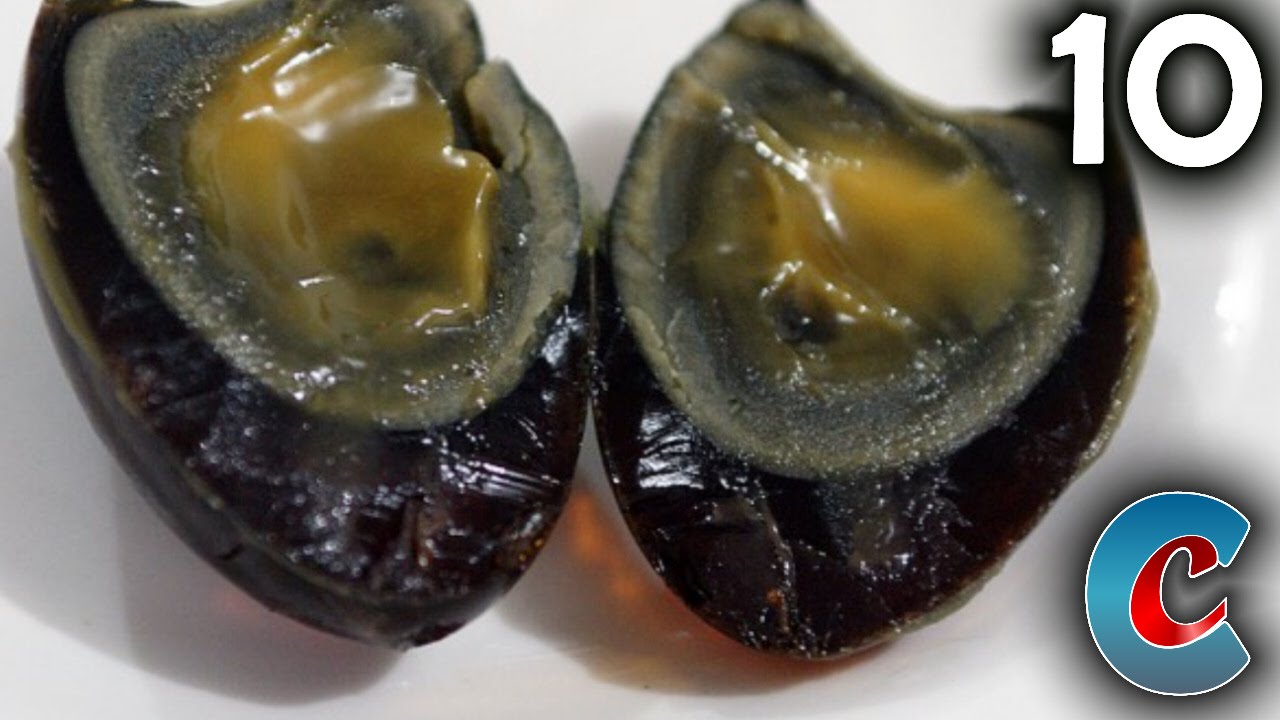From balut in the Philippines to casu marzu in Sardinia, the world is home to a variety of strange and unusual foods. Balut is a developing duck embryo that is boiled and eaten from the shell, while casu marzu is a cheese infested with live maggots. Escamoles are ant larvae considered a Mexican delicacy, and hákarl is fermented shark meat from Iceland. Surströmming involves fermenting Baltic herring in Sweden, while century eggs are preserved eggs in China. Fried tarantulas are a popular delicacy in Cambodia, and sannakji is live octopus in Korea. Haggis is a traditional Scottish dish made from sheep’s pluck, and escargot are edible land snails enjoyed in French cuisine. These unique dishes highlight the diverse culinary traditions around the world.
1. Balut
Balut is a popular street food in the Philippines and is considered one of the strangest foods people actually eat. It is essentially a developing duck embryo that is boiled and eaten from the shell. The dish is typically served with a sprinkle of salt or a splash of vinegar. While it may seem bizarre and unappetizing to some, it is considered a delicacy to many Filipinos.
2. Casu Marzu
Casu Marzu is a traditional Sardinian sheep milk cheese that is infested with live maggots. The cheese is intentionally left to ferment and attract the cheese flies, which lay eggs in the cheese. As the maggots hatch and start to eat through the cheese, it develops a gooey, decomposed texture. This cheese is consumed with the maggots still alive.
3. Escamoles
Escamoles, also known as ant larvae or insect caviar, are a Mexican delicacy made from the eggs of the giant black ant. These ant eggs are harvested from the roots of the agave or maguey plants. Escamoles are typically cooked and seasoned, then served in tacos or omelettes. They have a taste similar to buttery, nutty avocado.
4. Hákarl
Hákarl is a traditional Icelandic dish that consists of fermented shark meat. The meat of the Greenland shark is poisonous when fresh due to its high levels of urea and trimethylamine oxide. Therefore, it undergoes a unique preparation process that involves burying the shark in sand and gravel for several weeks to ferment and remove toxins. The end result is a pungent and ammonia-flavored dish.
5. Surströmming
Surströmming is a Swedish delicacy that consists of fermented Baltic herring. The herring is caught in the spring and then left to ferment in barrels for months. The fermentation process produces strong odors of rotten eggs and putrid fish. The fish is typically eaten by first opening the can underwater to prevent explosions and then consumed straight from the can or with bread and potatoes.
6. Century Eggs
Century eggs, also known as thousand-year-old eggs or pidan, are a Chinese delicacy. These eggs are prepared by preserving duck, chicken, or quail eggs in a mixture of clay, ash, salt, quicklime, and rice hulls for several weeks or months. The result is a black and gelatinous egg with a strong sulfuric aroma. Century eggs are often served as a side dish or incorporated into various traditional Chinese dishes.
7. Fried Tarantulas
Fried tarantulas are a popular delicacy in Cambodia. These large spiders, known as A-ping, are fried in oil until crispy. The legs and body are consumed, and they reportedly taste like a mix between chicken and cod. Fried tarantulas have become a tourist attraction in Cambodia and can be found in some markets and street food stalls.
8. Sannakji
Sannakji is a Korean dish made from live octopus. The octopus is typically cut into small pieces and served immediately after being killed, resulting in the tentacles still squirming on the plate. Due to the possibility of the tentacles sticking to the throat, it is important to chew it thoroughly. Sannakji is often served with sesame oil and sesame seeds.
9. Haggis
Haggis is a traditional Scottish dish made from sheep’s pluck (heart, liver, and lungs) mixed with onion, oatmeal, suet, spices, and salt. The mixture is then traditionally encased in the sheep’s stomach and simmered for several hours. Although the ingredients might sound unappealing, haggis is considered a delicacy in Scotland and is often served with neeps and tatties (turnips and mashed potatoes).
10. Escargot
Escargot, or edible land snails, are a popular delicacy in French cuisine. The snails are typically cooked with garlic, butter, and parsley, and served in their shells. Despite their slimy appearance, escargots are enjoyed for their tender texture and savory flavor. While it may be strange for some cultures, escargot is considered a gourmet dish in many parts of the world.
In conclusion, the world is filled with a variety of strange and unusual foods that are considered normal or even delicacies in different cultures. While some may seem unappetizing or bizarre to outsiders, these unique dishes are part of the diverse culinary traditions that make our world so interesting.
